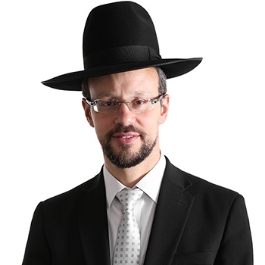
Rabbi Joshua Spinner
Director and Vice President of the Ronald S. Lauder Foundation, member of the Pardes Advisory Board
A kehilah or kahal is an assembly or gathering of people. Throughout history, this has always been understood as a physical gathering, a group of people who live within proximity to one another, interacting regularly and sharing one each others lives. Today’s virtual tools help one bridge unavoidable social distance, but do not replace a true, physical kehilah.
One of the greatest challenges facing Jewish life in many European cities today is that there is no kehilah. There are legal communal structures, to be sure, and there are many of the hallmarks of kehilah life, such as minyanim. But all too often, the handful of Torah observant Jews in a given city live far from one another, making true kehilah life impossible.
Pardes is Budapest’s answer to this challenge. An affordable opportunity for families to live together in one space, one neighborhood, is more strategic and wiser than most efforts undertaken in the city in the past two decades. With Siyata Dishmaya, Pardes could turn Jewish Budapest upside down, creating a genuine kehilah for the first time in decades and, with it, a remarkable kiddush Hashem.

Dr. Pál Hegedűs
Professor of Mathematics, Jewish educator, Head of the Pardes Board
I find the Pardes especially promising because it is a grassroots project. Its primary goal is building a community, not only erecting a communal building. Hence our focus is on cohesion. Both the upward motion and the aim for cohesion are essential ingredients of community building, still these are rare to find. What Pardes aims to reach has been unknown in Jewish Hungary in the past 80 years even though it is a working model in Worldwide Jewish life. It has many aspects and stumbling stones but these are not deterrents, rather they are especially helpful roadsigns for the purpose of continually reviewing and redefining our goals.

Zoltán Hámori
Chief Operating Officer, Organizational Development Consultant, Romaversitas Foundation, member of the Pardes Advisory Board
I think the project is important, not only for the newly religous, but also for the wider community because it is the only authentic and effective way to build a religious community. I pondered about it a lot, talked to people, and it crystallized that there was no other way it could work. Because it is very important for those who wish to see an authentic, working example especially that it should be in their own ambience. Authentic example are seen in Jerusalem and in the US, but it is a completely different experience to organise your religious lifestyle here in Budapest.
As long as this is missing, what does a young, interested Jew see? A neolog community torn by internal strife, a fragmented orthodox community of slightly larger than a minyan that relies on foreign tourists with no vision for the future and unable to overcome its outdated practices and which is in itself a closed world. And also Chabad characterised by openness and helpfulness but with a huge gap in religiosity between the mebership and the rabbis.
So there is no credible example, where is one to join? It is possible to use the services according to your needs (eg I buy meat in Dob butchery, I my tfilin fixed by the orthodox, I study in Lativ and join them for seudot, I turn ot Shiye if I have questions, I go to Chabad on holiday services and I use their luach, etc.) but you are more or less trying to survive alone. If there were an authentic community, this fragmentation would not be necessary, then one would be willing to make sacrifices, be it moving, or otherwise in order to pray and be together with the community.
I am ready to help because I appreciate that someone is finally taking real steps in this direction, willing to take risks and become committed to creating a religious community in Budapest, despite of the many failed previous attempts. I think you have everything you need to make this project a success, because if I didn’t think I wouldn’t put so much work into it.

Rabbi Moishe Halpern
Former Rosh Beit Midrash, Rabbinerseminar zu Berlin
For many hundreds of years, Hungarian Jewry has been at the forefront of Jewish life, with the countless customs and Minhagim stemming from the rich community life and Jewish culture. From laws to rituals to Hungarian cuisine, much of this was specifically due and because of the close-knit Jewish community life for which Hungarian communities are so famous. Despite the drastic change over the past century as Jewish life moved Westward, Jewish life in Budapest continues to thrive.
The forming of Pardes will give a tremendous revival to what Hungarian Jewry has always meant to so many, a form of Kehilla – Communal life, and we wish it every possible Hatzlacha.